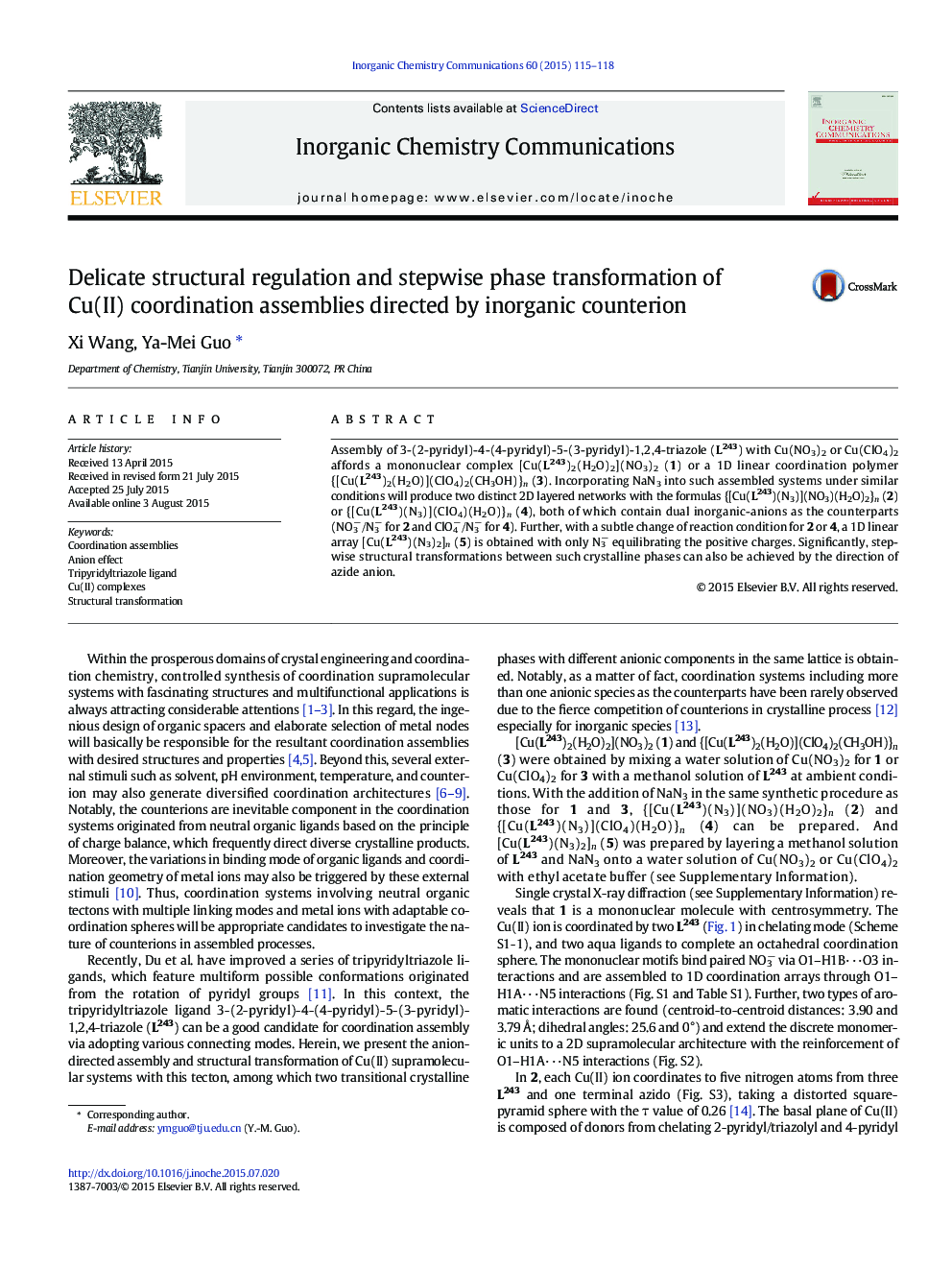| Article ID | Journal | Published Year | Pages | File Type |
|---|---|---|---|---|
| 1303357 | Inorganic Chemistry Communications | 2015 | 4 Pages |
•Five Cu(II) supramolecular complexes based on a versatile tripyridyltriazole ligand are obtained.•Their diverse structures can be well regulated by inorganic anions used in coordination assembly.•Stepwise structural transformations occur between the crystalline phases directed by azide anion.
Assembly of 3-(2-pyridyl)-4-(4-pyridyl)-5-(3-pyridyl)-1,2,4-triazole (L243) with Cu(NO3)2 or Cu(ClO4)2 affords a mononuclear complex [Cu(L243)2(H2O)2](NO3)2 (1) or a 1D linear coordination polymer {[Cu(L243)2(H2O)](ClO4)2(CH3OH)}n (3). Incorporating NaN3 into such assembled systems under similar conditions will produce two distinct 2D layered networks with the formulas {[Cu(L243)(N3)](NO3)(H2O)2}n (2) or {[Cu(L243)(N3)](ClO4)(H2O)}n (4), both of which contain dual inorganic-anions as the counterparts (NO3−/N3− for 2 and ClO4−/N3− for 4). Further, with a subtle change of reaction condition for 2 or 4, a 1D linear array [Cu(L243)(N3)2]n (5) is obtained with only N3− equilibrating the positive charges. Significantly, stepwise structural transformations between such crystalline phases can also be achieved by the direction of azide anion.
Graphical abstractA series of Cu(II) supramolecular complexes can be assembled from 3-(2-pyridyl)-4-(4-pyridyl) -5-(3-pyridyl)-1,2,4-triazole and different inorganic salts, in which azide anion is involved as the counterpart in different degrees to regulate their structures and stepwise structural evolution.Figure optionsDownload full-size imageDownload as PowerPoint slide
